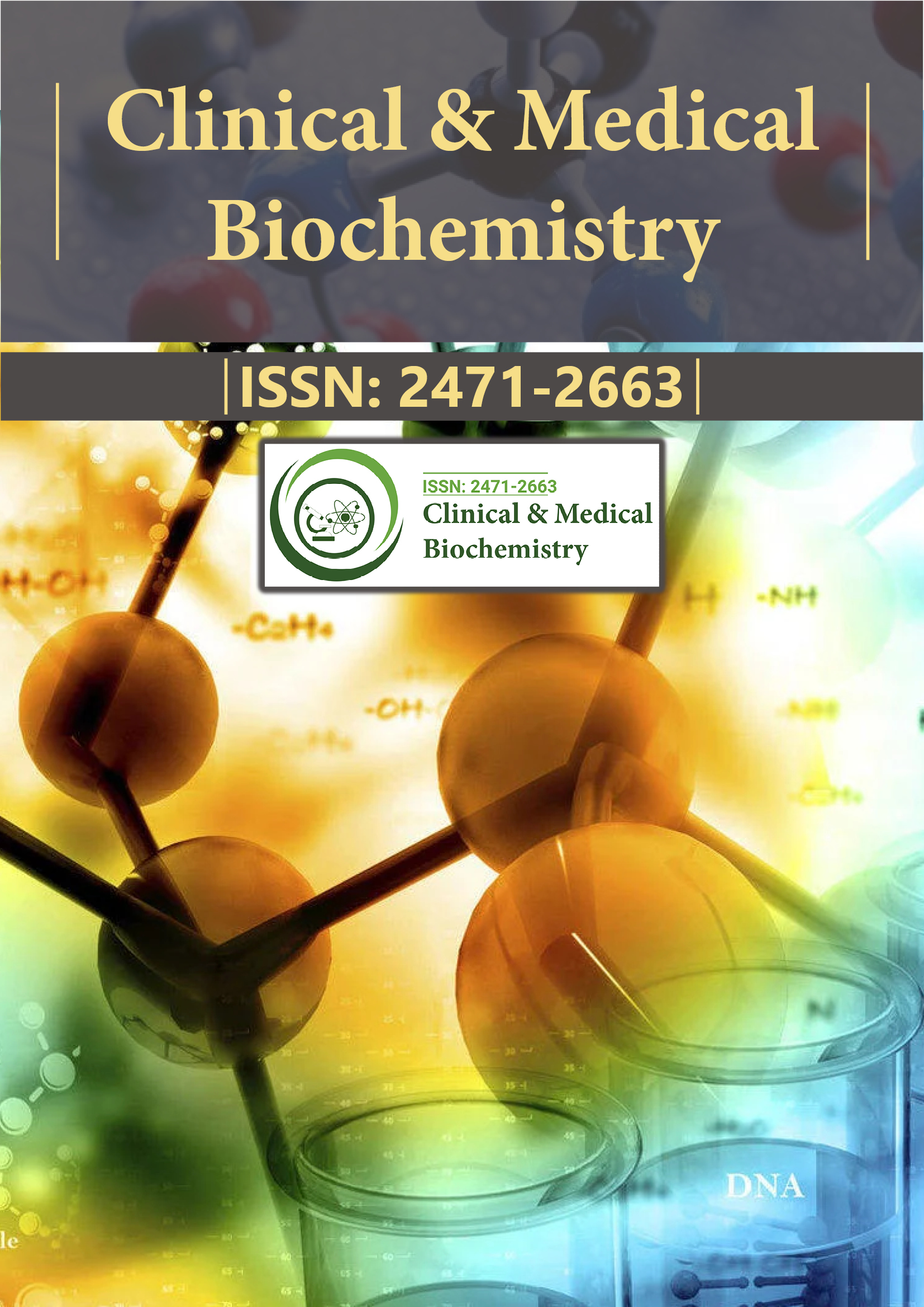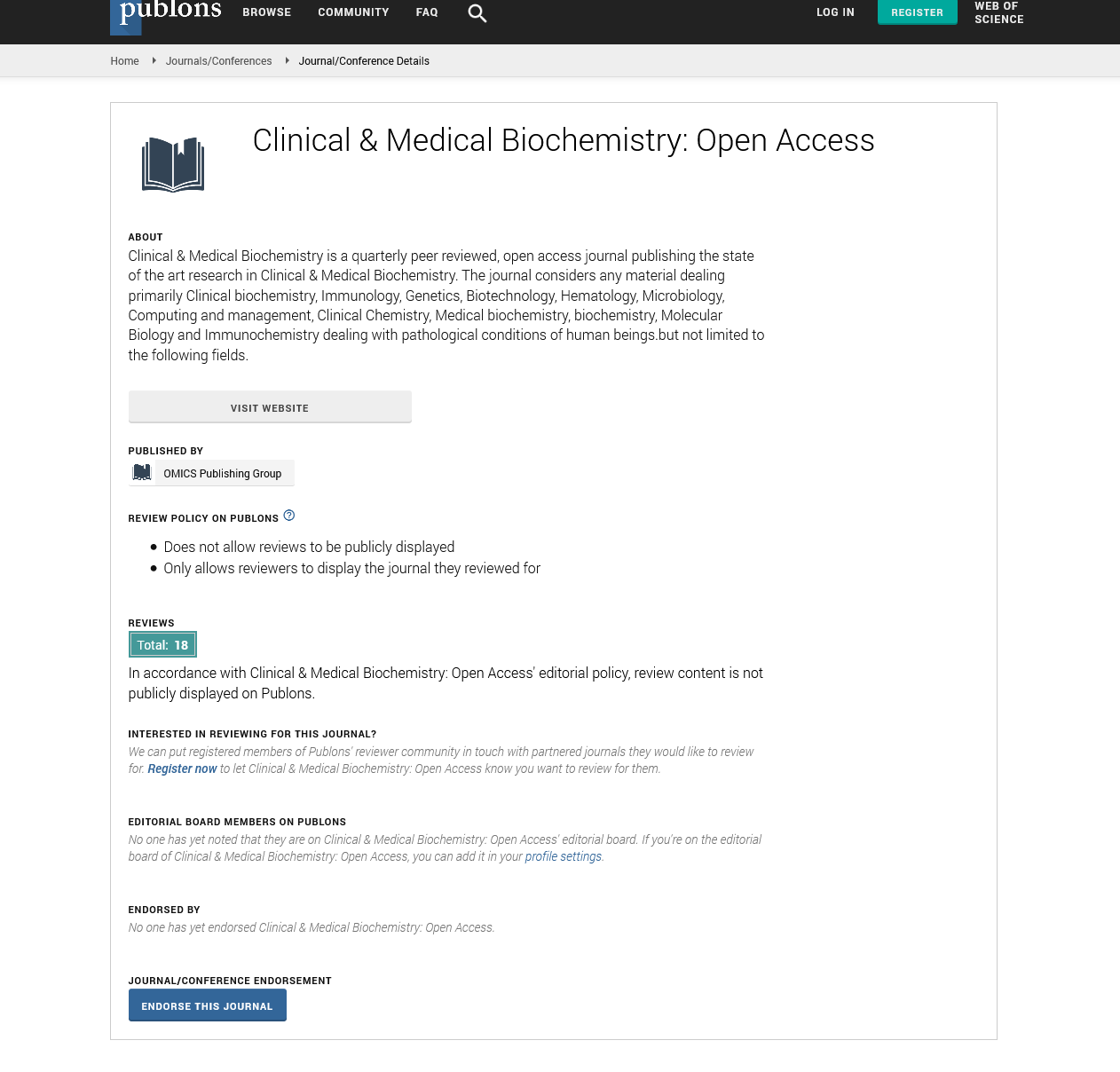Indexed In
- RefSeek
- Directory of Research Journal Indexing (DRJI)
- Hamdard University
- EBSCO A-Z
- OCLC- WorldCat
- Scholarsteer
- Publons
- Euro Pub
- Google Scholar
Useful Links
Share This Page
Journal Flyer

Open Access Journals
- Agri and Aquaculture
- Biochemistry
- Bioinformatics & Systems Biology
- Business & Management
- Chemistry
- Clinical Sciences
- Engineering
- Food & Nutrition
- General Science
- Genetics & Molecular Biology
- Immunology & Microbiology
- Medical Sciences
- Neuroscience & Psychology
- Nursing & Health Care
- Pharmaceutical Sciences
Opinion Article - (2024) Volume 10, Issue 1
Distinctive Roles of Properdin and Factor H in SARS-CoV-2 Infection
Teresa Evering*Received: 22-Dec-2023, Manuscript No. CMBO-24-24548; Editor assigned: 26-Dec-2023, Pre QC No. CMBO-24-24548 (PQ); Reviewed: 10-Jan-2024, QC No. CMBO-24-24548; Revised: 17-Jan-2024, Manuscript No. CMBO-24-24548 (R); Published: 24-Jan-2024, DOI: 10.35841/2471-2663.23.10.209
Description
The global landscape has been profoundly impacted by the SARS-CoV-2 virus, responsible for the COVID-19 pandemic. The intricacies of SARS-CoV-2 infection have caused a collective effort across the scientific community to comprehend the complexities of the virus, its transmission, and the diverse manifestations of the disease. At its core, SARS-CoV-2 is a novel coronavirus, part of a family of viruses that includes those responsible for diseases like the common cold, as well as more severe respiratory illnesses like Severe Acute Respiratory Syndrome (SARS) and Middle East Respiratory Syndrome (MERS). The virus primarily spreads through respiratory droplets when an infected person coughs, sneezes, or talks. Considerate the transmission dynamics has been dangerous in developing public health strategies to mitigate the spread of the virus. Upon infection, the virus primarily targets the respiratory system, gaining entry into human cells through the Angiotensin- Converting Enzyme 2 (ACE2) receptor. This receptor, abundantly present in the respiratory tract, facilitates the virus's entry and subsequent replication. As the virus replicates, it triggers an immune response, leading to the array of symptoms associated with COVID-19.
The clinical manifestations of SARS-CoV-2 infection are diverse, ranging from asymptomatic cases to severe respiratory distress and multi-organ failure. Common symptoms include fever, cough, and shortness of breath, while some individuals may experience fatigue, loss of taste or smell, muscle aches, and gastrointestinal symptoms. The severity of the disease can vary widely, with certain individuals remaining asymptomatic carriers and others requiring intensive medical intervention. The impact of SARS-CoV-2 extends beyond the immediate health consequences, affecting societal structures, economies, and healthcare systems worldwide. The contagious nature of the virus has prompted governments and health organizations to implement a range of measures, including social distancing, mask-wearing, and lockdowns, to curb its spread. Diagnostic testing has played a pivotal role in identifying and isolating cases of SARS-CoV-2 infection. Polymerase Chain Reaction (PCR) tests, which detect the virus's genetic material, and antigen tests, which identify viral proteins, are commonly used for diagnosing active infections. Serological tests, which detect antibodies produced in response to the virus, provide insights into past infections and potential immunity.
Efforts to develop effective treatments and vaccines against SARS-CoV-2 have been at the forefront of scientific research. Antiviral medications, corticosteroids, and immune-modulating drugs have been explored for treating severe cases, while vaccines have emerged as a key tool in preventing infection and reducing the severity of the disease. The rapid development and deployment of vaccines have been a remarkable feat, showcasing the resilience and collaborative spirit of the global scientific community.
While vaccines have demonstrated efficacy in reducing the severity of illness and preventing hospitalization, advance infections and the emergence of new variants pose ongoing challenges. Variants of concern, characterized by specific genetic mutations, may impact the transmissibility, severity, or immune evasion properties of the virus. Continuous monitoring and adaptation of vaccination strategies are essential in navigating the evolving landscape of SARS-CoV-2. The long-term consequences of SARS-CoV-2 infection, often referred to as long COVID or Post-Acute Sequelae of SARS-CoV-2 infection (PASC), have collected increasing attention. Individuals with long COVID may experience persistent symptoms, including fatigue, brain fog, and respiratory issues, long after the acute phase of the illness. Accepting the mechanisms and optimal management of long COVID remains an active area of investigation.
Beyond the immediate health impacts, the pandemic has highlighted and exacerbated existing health disparities. Vulnerable populations, including those with limited access to healthcare, essential workers, and communities facing socioeconomic challenges, have borne a disproportionate burden of the disease. Addressing these inequalities is essential in building more resilient and equitable health systems. The multifaceted nature of SARS-CoV-2 infection has prompted a reevaluation of global preparedness for pandemics. Lessons learned from the COVID-19 pandemic underscore the importance of strong public health infrastructure, early detection and response mechanisms, and international collaboration in addressing emerging infectious diseases.
Conclusion
In conclusion, the SARS-CoV-2 pandemic has extended as a complex global challenge with far-reaching consequences. Unraveling the intricacies of the virus, accepting its transmission dynamics, and navigating the clinical manifestations have been central to mounting an effective response. While the development and deployment of vaccines represent significant milestones, ongoing efforts to monitor and adapt to the evolving nature of SARS-CoV-2 are important. The collective resilience and scientific innovation demonstrated during this pandemic provide valuable insights and lessons that will shape future strategies for preventing, detecting, and responding to emerging infectious threats.
Citation: Evering T (2024) Distinctive Roles of Properdin and Factor H in SARS-CoV-2 Infection. Clin Med Bio Chem. 10:209.
Copyright: © 2024 Evering T. This is an open-access article distributed under the terms of the Creative Commons Attribution License, which permits unrestricted use, distribution, and reproduction in any medium, provided the original author and source are credited.

